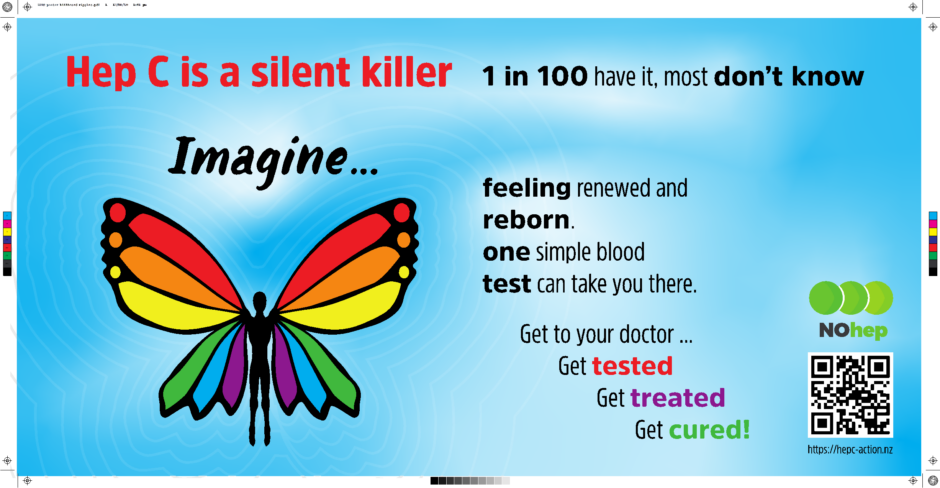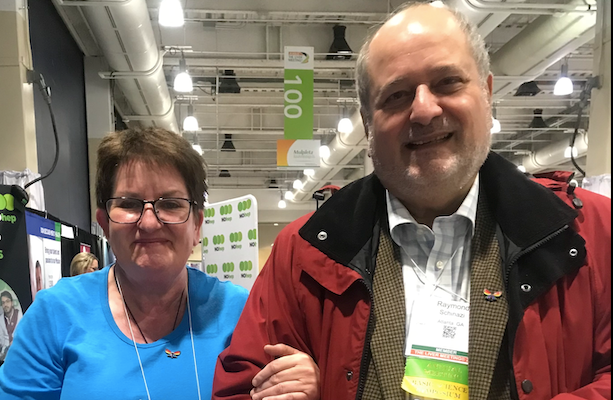Written by Hazel Heal, a human rights lawyer, Edmund Hillary Fellow, and lead advocate for Hep C Action Aotearoa, Dunedin, New Zealand
![]()
I should not be alive to write this. It took a medical miracle, the world’s first ever cure for a virus, and some close timing. It also took me pushing back on the pervasive stigma.
I am a human rights lawyer from New Zealand, recently admitted to the bar. It took me until my fifties to achieve this because I lived my whole adult life under the fog of hepatitis C (hep C).
Hep C and I share a storyline: I was diagnosed when the test was developed in 1992 and subsequently have had biopsies, undergone two rounds of interferon/ribavirin, and progressed all the way to decompensating cirrhosis. In 2015, it seemed like my time had run out. I did however learn about the miracle cure at $84,000 per treatment, which to me was out of reach. I managed to obtain some through personal importation of generics and thankfully made a full recovery. 1
Following this journey, I have been using my new energy, my second chance, to increase access to treatment and raise awareness.
Hep C Stigma Kills
In New Zealand, like many places, approximately 40% of liver transplantees have no idea they are hep C virus (HCV) positive until they reach the severity of sickness that requires a transplant.2 They must have been chronically ill for years yet not been diagnosed with the virus. The reason for this is the endemic stigma. It is dangerous, illogical, and costs health systems money. Hep C affects at least 1% of the population worldwide, meaning that millions of people need to hear: “Hey! This could be you.”
That message is not getting through globally because we keep doing the same thing and expecting a different outcome. We are looking for the undiagnosed through targeted messaging, that singles people out, shining a torch on their past or present lifestyle, potentially ignoring those who are in need of a diagnosis.
It is not about How, it is about Now
Around 20% of those who are HCV positive did not become infected through intravenous drug use.3 Many who did get it from equipment sharing did this many years ago, maybe only once, and do not identify with the risks. People who use drugs may also wish not to be stereotyped. An important fact to remember is that every single one of us was infected accidently.
Everyone takes risks, whether they are obvious or not: skiers, motorcyclists, even dancers cost health systems money and resources. Hep C campaigns often focus on the risks, which reads like legislation. There is the suggestion of fault. If made uncomfortable, people tend to look away because they can. By focussing on the benefits and the good news, the message can be made attractive and therefore reach more people who are undiagnosed.
Patient Voices
I know how important it is to have patient advocates because I represent thousands that cannot speak publicly. I have been the administrator of, or senior contributor to, online groups including >10,000 global patients with hep C. I started the group Hep C Action, have spoken at national and international conferences, and am the patient representative on my regional and national hep C government committees. Through this I hear the stories of casual, careless, or deliberate stigmatising by family, workmates, and health professionals. I have even personally experienced it.
We have a Solution for Everyone, Everywhere, to Erase Stigma
There is a marketing norm of “who is your target audience.” It is nearly always right, but this virus is different, and that approach is not working. Society is the target. The stigma must be turned on its head if people are going to be encouraged to get tested. Everyone needs to be told: “If you test negative, that is good news; but testing positive is also good news. You will feel better when treated.”
A Gamechanger
In 2017, my Hep C Action colleague Dr James Freeman conceived of and commissioned the #hepcbutterfly to symbolise HCV.4 The colourful figure represents metamorphosis and the butterfly effect of people being cured. It creates an umbrella to the ‘get tested’ message that shelters everyone from the glare.

Image makeover
Hep C did not have an international identity, despite it being twice as prevalent as HIV, for example.5 The #hepcbutterfly is our red ribbon, our daffodil. This symbol is a pivotal world health moment; it dismantles stigma. People take two steps forward, instead of backward. It catches the eye in an overcrowded market. It routinely triggers conversations and, ultimately, treatment.
Thousands of clinicians, patients, researchers, and marketing experts have resoundingly endorsed it. We have given away thousands of lapel pins and constructed billboards and giant posters. In New Zealand, following these campaigns we have recently seen testing numbers rise. We should test everyone.6
I recently became aware of a woman in her early 60’s; she has pierced ears and a tattoo out of sight, yet her doctor assured her she was not the ‘type’ to need a test, even with those risks and accompanying symptoms. I am simply asking clinicians to suspend assumptions and test your patients regardless of risk factors. Test anyway. That is the only way we will find the missing.
Our Message
Doctors stigmatise people by making assumptions and testing only when they think there is a good chance of finding something, someone who “potentially has hep C” you may say. That keeps missing the people who are hardest to find. Stigma in medicine is very high, whether it be inadvertent or not; unfortunately, I know from experience that clinicians do not think it means them, so they do not change themselves, or are sometimes offended by the suggestion that they might be acting under preconceptions. The woman whose story I told, her doctor thinks that she is being nice and supportive by telling her she does not need to be tested for hep C, but ultimately despite her kindness, she is not actually helping. Stigma is rife across society, so telling doctors to “test everyone” is the only way to convey the need to test anyone who presents with hep C symptoms, despite their lifestyle or whether the doctor thinks that the patient is potentially infected. Realistically, everyone could potentially be infected.
Call to Action
Here is what you can do. Use the symbol and melt the stigma. Add it to your national or local campaign or to wherever you are trying to tell people about hep C. Use our Hep C Action posters; adapt them, translate them, add your logo. Send us the file to continue the butterfly effect. This image and materials are free. One in a hundred pairs of eyes that is attracted to the positive message is someone like me, who needs to be treated. You can prompt them to act.
End.
We are a small not-for-profit, fired up, working to see the world free of the incalculable costs of chronic hep C.
References
- https://www.thelancet.com/journals/lancet/article/PIIS0140-6736(16)32051-7/fulltext
- https://www.nzma.org.nz/journal/read-the-journal/all-issues/2010-2019/2014/vol-127-no-1407/6390
- https://bmcinfectdis.biomedcentral.com/articles/10.1186/s12879-019-4284-9
- https://fixhepc.com.au/blog/item/141-assigning-the-hep-c-butterfly-symbol-to-the-public-domain.html
- https://www.who.int/news-room/fact-sheets/detail/hepatitis-c
- https://www.mdedge.com/familymedicine/article/64952/infectious-diseases/hepatitis-c-new-cdc-screening-recommendations
LINKS:
Free #hepcbutterfly resources:
https://www.hepc-action.nz/resources/#the-butterfly
https://stories.ehf.org/ehf-fellow-hazel-heal-87c41cbf76cc
https://www.linkedin.com/company/hep-c-action/?viewAsMember=true
Hazel Heal of Hep C Action with Dr Raymond Schinazi, who discovered the world’s first virus cure, for HCV, meet at AASLD Boston 2019.









